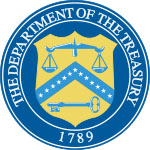 This is the second of my three part series on traveling to Cuba.
This is the second of my three part series on traveling to Cuba.
» Part 1: History & Why You Need to Go
» Part 2: Getting There By Any Means Necessary
» Part 3: Through My Own Eyes
Part One of the series focused on the history of the embargo, how the embargo is portrayed in the US and my opinions on why every American should visit the island. Part Two focuses on how a US citizen can qualify/travel to Cuba and a few tips on what to expect once they arrive. Finally, Part Three will detail my personal experience on the island in the familiar trip review format – including pictures and video.
| Table of Contents |
| Qualifying for Travel |
| Getting into Cuba |
| Where to Stay |
| What to Expect on Arrival |
| Getting Back (aka the Fun Part) |
| Resources |
| Conclusion |
Part Two assumes you have decided to take the plunge and visit the forbidden island but aren’t sure how to go about it and how to avoid the pitfalls. Information about how a US citizen can qualify for travel to Cuba, actually getting to the forbidden island, where to stay, what to expect on arrival and returning to the US safely and without incident are included in this article. If you are not a US citizen, this obviously doesn’t apply to you – but it may be a good read nonetheless. As you read through this article, I want you to keep in mind of one important fact – I am not an attorney. You should take my experiences (as well as anyone else’s) with a grain of salt – your mileage may vary. Showing the US Customs Agent a copy of this blog article is unlikely to help with any situation you may encounter. If you are in any way uncomfortable with the steps I’ll outline, I suggest you visit a Visa attorney with experience in these matters.
Qualifying for Travel
 It’s important to understand that it is against US law to contribute to the Cuban economy – it is not against Cuban law. The big misconception is the Cuban government doesn’t want or in some way makes it difficult for US citizens to visit the island. This couldn’t be further from the truth. In fact, your presence off the plane in Havana is likely to be greeted with… a shrug. The Cubans welcome all visitors with open arms. There are two ways of getting to Cuba – legally and illegally, both of which I will outline below. I warn you, except for the “I’m gonna wing it” approach, the process to legally get to Cuba is fairly time consuming and difficult (because you must qualify). To that point, here’s an overview of your options;
It’s important to understand that it is against US law to contribute to the Cuban economy – it is not against Cuban law. The big misconception is the Cuban government doesn’t want or in some way makes it difficult for US citizens to visit the island. This couldn’t be further from the truth. In fact, your presence off the plane in Havana is likely to be greeted with… a shrug. The Cubans welcome all visitors with open arms. There are two ways of getting to Cuba – legally and illegally, both of which I will outline below. I warn you, except for the “I’m gonna wing it” approach, the process to legally get to Cuba is fairly time consuming and difficult (because you must qualify). To that point, here’s an overview of your options;
- Legal: Specific License – Specific Licenses must be applied for and are approved on a case-by-case basis by the US State Department. Specific licenses are primarily granted to those who have immediate family living in Cuba, are freelance journalists, those participating in international sporting events (like the Olympics), teaching/enrolled in a recognized university, religious activities and humanitarian causes (hurricane relief). In most cases, the traveler will not have to engage in the complete licensing process themselves; their Job/School/Organization will likely complete most of the paperwork on their behalf. To be clear, any visit to Cuba for the purposes of conducting business (including nonprofit) is strictly prohibited. Once you have been granted the Specific License, you may legally purchase a direct charter flight ticket to Havana from Miami, New York or Los Angeles. Many of the US based travel agencies authorized to book flights to Cuba will not do so unless you have a Specific License.
- Legal: General License – A General License differs from the Specific License in that the traveler does not have to obtain prior approval from the US State Department but they must still qualify and document the license in order to legally travel. Areas where a General License would be issued are professional journalists on assignment, full-time professionals doing research/agricultural activities, those on official government business and members of international originations. Tourism is not an acceptable reason to visit Cuban under the General License provisions.
- Illegal – By far the easiest and riskiest way to get to Cuba. If you simply feel “the hell with it, Da Man can’t keep me down and ima go where I wanna go”, then this is this a common if not precarious way of traveling to Cuba. In fact, most US citizens who travel to Cuba do so without a Specific or General License (read illegally) and for the most part – nothing happens to them. Before you stop reading to pack your bags for your danger filled jaunt to Havana, I’d suggest you take a moment to read the ‘Getting Back’ section to understand the consequences of this action.
Steps for documenting a General License:
Should you determine that the General License is the most appropriate license for your circumstance, these are the high-level steps you’ll need to take to properly document your status.
- Determine whether you fit into any of the categories listed in the state Department’s General License section
- Complete a General License Travel Affidavit which states you are aware and have met the OFAC regulations for travel to Cuba. Affidavit must be notarized by an attorney or a notary public.
- Write a short letter describing the purpose of your visit showing the activities are in line with permitted travel to Cuba.
- Obtain a letter from your employer/organization that clearly shows you are full time employed in a profession related to your General License pursuit.
- Create an itinerary of your activities while in Cuba that relate to the legitimate reason for visiting. Include the person(s) names if applicable, dates/time and activities.
- Bring a copy of the Dept. of Treasury rules for General License along with you during your trip.
This last bullet is critical because not every Customs Agent knows the General License rules specific to Cuba. You can assist in your re-entry process by highlighting the relevant sections of the law (the section stating General Licenses do not require prior approval). Don’t let an uninformed Customs Agent impact your re-entry. A more detailed explanation, as well as a few document templates can be found here.
Getting Into Cuba
 Keep in mind that just because you have been approved for travel to Cuba, Delta airlines still can’t fly your there; you’ll need to charter a flight if you want to fly directly into Havana from the US. Charter flights are not cheap; I’ve heard of $1,000 tickets for the 45 minute flight from Miami. For this reason, many people go through a 3rd party country even if they have a Specific License.
Keep in mind that just because you have been approved for travel to Cuba, Delta airlines still can’t fly your there; you’ll need to charter a flight if you want to fly directly into Havana from the US. Charter flights are not cheap; I’ve heard of $1,000 tickets for the 45 minute flight from Miami. For this reason, many people go through a 3rd party country even if they have a Specific License.
Using a 3rd party country allows US citizens to get to Cuba using airlines not beholden to the US embargo – usually national carriers of the 3rd party country. The most popular 3rd party countries are Canada, Bahamas, Jamaica and Mexico. If you live in the upper Midwest or Northeast, Canada is likely your easiest and least obstructive option of getting to Cuba. If you live in Florida, particularly South Florida, the Bahamas is a good option since that flight is only about 45 minutes from Miami. Jamaica will certainly work, but it’s not the most efficient option since you have to fly past Cuba to get to Kingston and then fly back north to land in Havana. For everyone else, the best option is probably Cancun as it is only 50 minutes flight time from Havana and is served by two carriers Mexicana and Cubana Airlines. Remember, flying into Cuba via a 3rd party requires a little patience, faith and cold hard cash. Your US based credit/debit cards are completely useless. Also, since you must pay cash for the tickets and you can only do that at the airport – you will be at the whim of market conditions, e.g., supply-demand may push the $200 ticket a month before takeoff to $500 the day of the flight. One other thing, purchasing a ticket the same day of travel opens the possibility that there may not be seats available when you arrive at the airport.
 An alternate method of getting into Cuba is via your own boat (no cruise or charter boat will take you there). Technically speaking, if you visit Cuba without putting any money into that country’s economy – you haven’t broken any laws. Again, it is not illegal to be in Cuba, it is illegal to contribute to its economy. If you have a boat big enough to make the roundtrip without refueling, swim to shore (docking your boat in the marina requires payment), fished over the side of your boat for food and brought your own water – you are good “technically”. Unfortunately, Uncle Sam is fully aware of this little loophole boaters in South Florida have tried to use in the past and considers any time spent inside Cuba longer than a single day to be prima facie proof of violating the embargo.
An alternate method of getting into Cuba is via your own boat (no cruise or charter boat will take you there). Technically speaking, if you visit Cuba without putting any money into that country’s economy – you haven’t broken any laws. Again, it is not illegal to be in Cuba, it is illegal to contribute to its economy. If you have a boat big enough to make the roundtrip without refueling, swim to shore (docking your boat in the marina requires payment), fished over the side of your boat for food and brought your own water – you are good “technically”. Unfortunately, Uncle Sam is fully aware of this little loophole boaters in South Florida have tried to use in the past and considers any time spent inside Cuba longer than a single day to be prima facie proof of violating the embargo.
Regardless of how you get into Cuba, the Cuban immigration control agency is fully aware of the embargo and will not stamp your passport. You will be issued a temporary visa card which you keep with you throughout your stay.
Finally, as of May 1, 2010, tourists, foreigners with temporary residence in Cuba and Cubans living abroad who visit Cuba will have to purchase medical insurance. The insurance can be purchased from foreign companies approved by the Cuban government or by Cuban firms at the ports of entry. Diplomats and representatives of accredited international organizations do not have to be insured.














